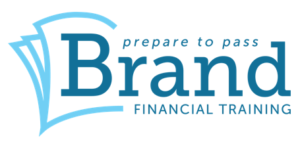Professional Paraplanner’s TDQ (Training, Development and Qualifications) series, is run in conjunction with key support providers, such as Brand Financial Training, and aims to test your knowledge of the financial services market, as part of your overall training goals and exam techniques.
The following questions, which can also be found in our December 2020 issue, relate to examinable Tax year 20/21, examinable by the CII until 31 August 2021.
QUESTIONS
1. Clay, a higher rate taxpayer, has come to you for advice. Which of the following would NOT normally be recommended as a tax planning strategy for him?
A. Consider a higher risk investment like an EIS just to qualify for the tax relief
B. Consider taking maximum pension commencement lump sum from a pension when the client’s sole requirement is income
C. Delaying investment to qualify for an allowance, e.g. splitting an investment to straddle two tax years for an ISA investment
D. Delaying or bringing forward transactions so that they fall into certain tax years.
2. An investment manager who uses arbitrage pricing theory hopes to:
A. magnify gains through borrowing.
B. identify shares that offer long-term sustainable advantage.
C. identify shares that are mispriced in the market.
D. prove that average opinion is usually wrong.
3. Lenny owns an 80% share in the family company and on his daughter Freya’s 21st birthday gives her a 20% shareholding. Instead of paying Capital Gains Tax (CGT) on the gain of £50,000 he has made, Lenny instead claims holdover relief. What is the impact of this course of action?
A. There is no impact on Freya but if she disposes of the shares Lenny will then have to pay the outstanding CGT
B. Holdover relief extinguishes Lenny’s CGT liability and Freya acquires the shares at the value at the time they are transferred to her
C. There is no impact on Freya but if she disposes of the shares Lenny will then have to pay the CGT but at the reduced holdover rate of 10%
D. Freya acquires the shares at Lenny’s acquisition cost and if she disposes of the shares her gain will include Lenny’s gain of £50,000
4. A self-employed individual can obtain higher rate tax relief on personal pension contributions by:
A. reducing their first payment on account by the amount of tax relief.
B. reducing their second payment on account by the amount of tax relief.
C. reducing their balancing payment by the amount of the tax relief
D. paying the pension contributions net of higher rate tax.
5. Which of the following is NOT an argument in favour of taking out private medical insurance?
A. It is more suitable for a patient with a chronic medical condition
B. Avoids long waiting lists for NHS treatment
C. Patient is normally able to choose their own hospital and surgeon
D. Likely to have a private room rather than be on a general ward
6. Glen is a successful fund manager with an impressive track record. His latest fund has a positive alpha. This indicates to potential investors that Glen has outperformed the market after adjusting for:
A. Alpha
B. Beta
C. The Sharpe Ratio
D. The Information Ratio
7. Carly, aged 69, owns her house valued at £100,000 with no other capital – her income is made up of State pension, additional State pension and State pension guarantee credit. What is a potential risk of releasing equity of £20,000 from her home to provide her with a cash emergency fund?
A. Loss of potential entitlement to Disability Living Allowance
B. Reduction to her State pension
C. Loss of entitlement to State Pension Guarantee Credit
D. Reduction in additional State pension entitlement
8. A company has been paid 100,000 euros for goods and wants to convert this to sterling. If the GBP:EUR quote is 1.2503/8 what amount would the company receive?
A. £79,980.80
B. £79,968.01
C. £79,948.83
D. £79,929.66
9. Local authority circulars contain guidance on care and other issues to councils and local authorities. They are issued by the:
A. National Health Service
B. Department of Health and Social Care
C. Court of Protection
D. Clinical Commissioning Groups
10. Home income plans were made up of which of the following?
A. An endowment policy and an annuity
B. A whole of life policy and an annuity
C. Cash and a whole of life policy
D. Cash and an annuity






























